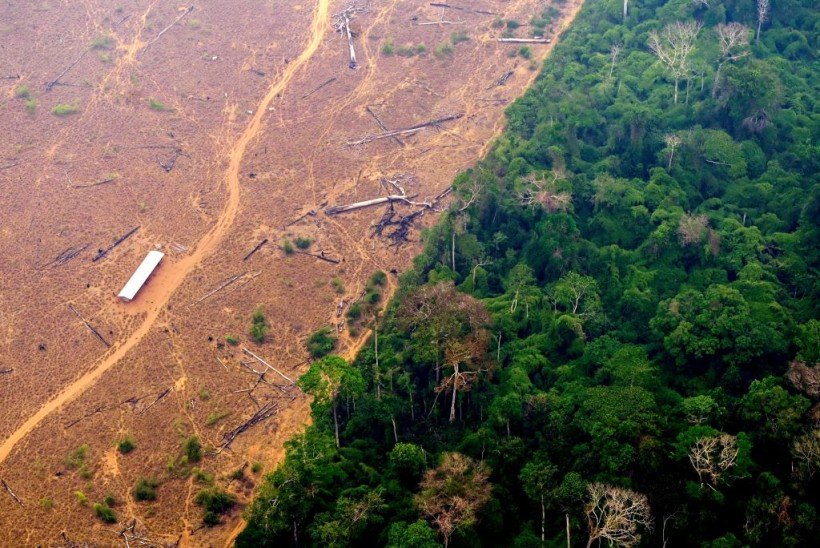For the first time, a common policy to protect the Amazon rainforest will be developed at the summit, according to President Luiz Inacio Lula da Silva’s statement from last week.

Brazil is hosting a summit of eight countries to address Amazon rainforest ecosystem challenges. President Luiz Inacio Lula da Silva pledges to end deforestation by 2030, following years of destruction under Bolsonaro. Representatives from Bolivia, Brazil, Colombia, Ecuador, Guyana, Peru, Suriname, and Venezuela will attend the two-day meeting of the Amazon Cooperation Treaty Organization (ACTO) in Belem.
For the first time, a common policy to protect the Amazon rainforest will be developed at the summit, according to Lula’s statement from last week.
He declared, “I have high hopes for this summit. We are going to have a common policy for the borders, security, and preservation of the Amazon for the first time.”
The Amazon, a vast rainforest twice the size of India that spans eight nations and one territory, is a vital carbon sink because it absorbs carbon dioxide emissions, which are the main cause of the climate crisis.
Deforestation, according to atmospheric chemist Luciana Gatti, a researcher for Brazil’s National Institute of Space Research, increases the amount of greenhouse gases in the atmosphere, which typically results in less precipitation and warmer temperatures.
According to Gatti, we are hastening climate change by destroying the Amazon Rainforest.
She collaborated on a study that was published in the journal Nature and discovered that the heavily deforested eastern Amazon no longer serves as a carbon sink but is now a carbon source. To maintain the rainforest as a barrier against climate change, according to Gatti, half of the deforestation in the eastern Amazon must be reversed.
Bolsonaro, who held office from January 1, 2019, to December 31, 2022, pushed for more economic growth in the area and limited the authority of the departments in charge of the environment and indigenous affairs. He was the target of harsh criticism from rights organisations who claimed that his policies had increased deforestation and violence against Indigenous communities.
According to the Monitoring of the Andean Amazon Pact, the Amazon biome has lost more than 85,000 sq km (328,000 sq miles), or roughly 13 percent, of its original area.
Brazil’s national space agency reported a 117% increase in carbon emissions from Amazon in 2020, driven by increased cattle ranching and soybean farming, new technology, and global demand for grain and beef.
Brazil’s capital, Para, is the top emitter of greenhouse gases as a result of the Amazon’s 41% deforestation. In order to run cattle, the state converted land, contaminating the water and upsetting the Indigenous people.
Hydroelectric dams, illegal logging, mining, and oil drilling are additional environmental threats that disturb Indigenous ways of life. Additionally, inadequate infrastructure investment causes sewage from homes in the rainforest to enter waterways without any treatment.
The first summit of the Amazon Cooperation Treaty Organization will promote sustainable development for the 50 million residents of the region, including Indigenous groups, while battling deforestation of Amazon rainforest and organised crime.
An ambitious joint declaration that will serve as a roadmap for countries over the ensuing years will cap off the summit. Protecting the rainforest and ensuring the welfare of its inhabitants are the objectives.
Brazil’s environmental policies hold significant importance due to its economic heft and regional trendsetter status. Many countries follow Brazil’s lead, and Environment Minister Marina Silva announced that summit participants aim to establish a scientific body like the UN Intergovernmental Panel on Climate Change to share research on the Amazon.
According to Silva, the panel will monitor how climate change is affecting the Amazon rainforest and ecosystem while contributing to the creation of sustainable development policies for the region’s nations. It would also try to establish the boundaries of what experts refer to as the “point of no return,” which is the point at which the rainforest is irreparably damaged.
President Gustavo Petro of Colombia urged his Brazilian counterpart to stymie any further oil exploration in the Amazon during a pre-summit meeting last month. Are we going to allow the Amazon rainforest to be used for hydrocarbon exploration? for use as building blocks for exploration? Is there wealth there, or is humanity on the verge of extinction? Petro questioned in a speech with Lula.
At the meeting in Leticia, Colombia, Lula pushed for a commitment from all the regional nations to put an end to deforestation by the year 2030. Only Venezuela and Bolivia have not yet agreed to this.
More nuanced disagreements about priorities may also come to light at the summit. Cross-border cooperation to address the growing threat of drug traffickers committing environmental crimes in the Amazon was at the top of the pre-summit meeting’s agenda.
More than 50 environmental organisations urged the governments of the area to adopt a strategy “to prevent the Amazon from reaching a point of no return” before the summit.
The Climate Observatory published a petition urging other nations to support Brazil’s goal of ending illegal deforestation by 2030, support Indigenous rights, and take “effective measures to fight environmental crimes.”
Additionally, the environmental organisation WWF-Brazil urged summit attendees to develop “a firm and ambitious declaration” for an action plan to stop illegal gold mining and deforestation and “conserve 80% of the Amazon.”
Since it threatens the livelihoods of millions of people and the ecosystem services that support the environmental health of the entire South American continent, stopping the Amazon’s tipping point is “critical regionally and globally,” according to the group.